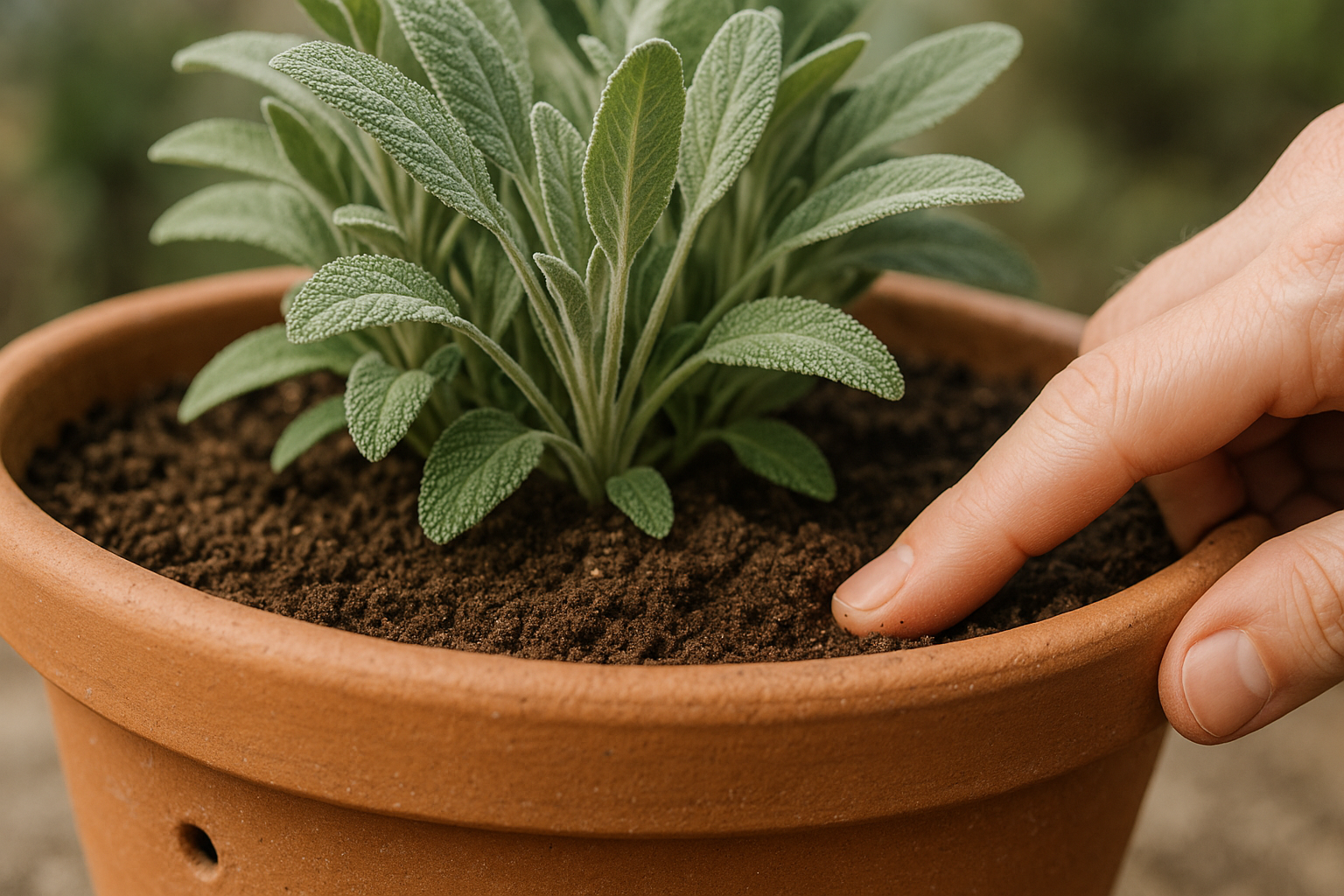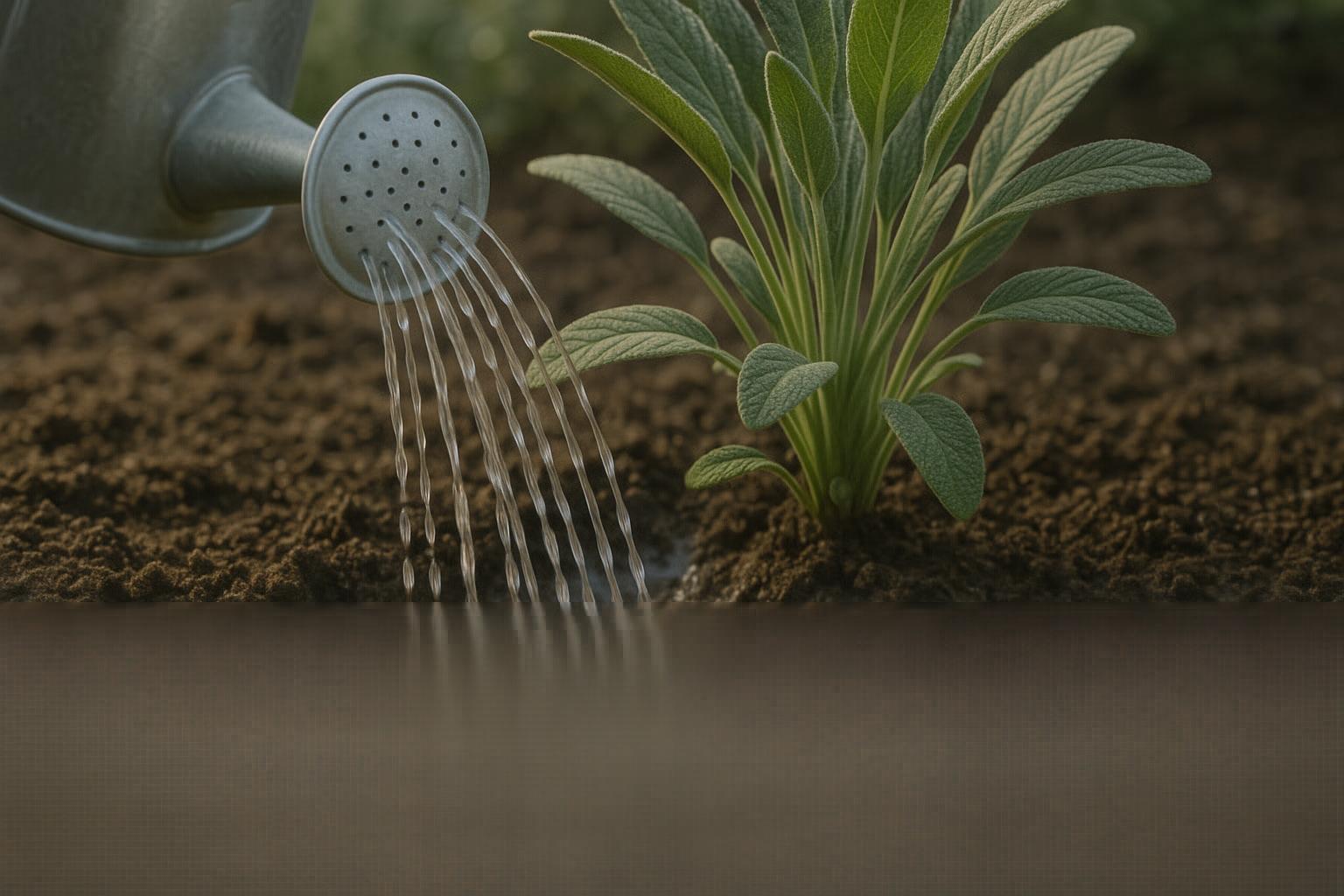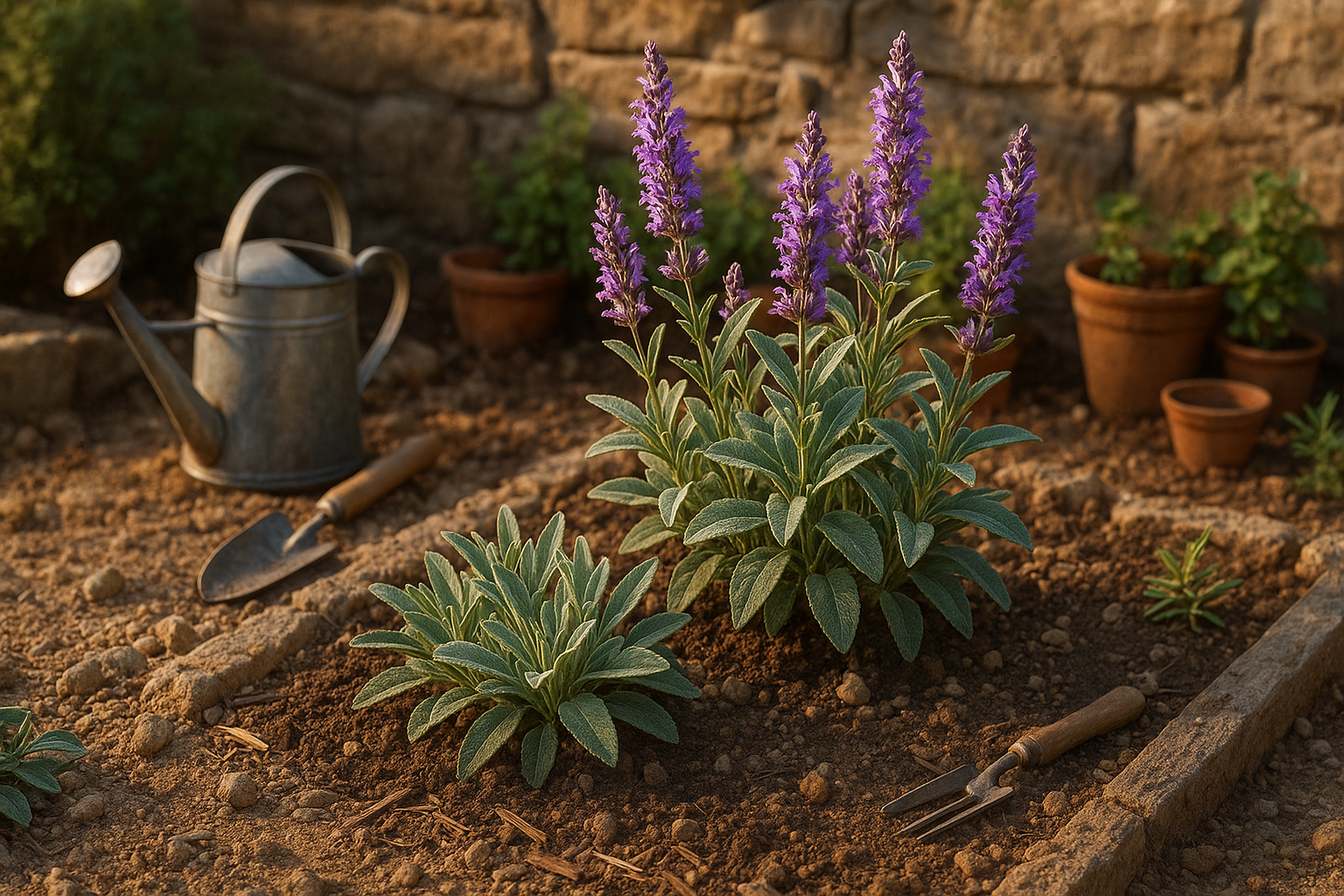Understanding Sage’s Water Needs

Sage thrives because of its Mediterranean roots, where rocky soils and infrequent rainfall are the norm. In your own garden, this means sage prefers well-drained soil and doesn’t like having “wet feet.” Unlike moisture-loving herbs such as basil or mint, sage’s leaves are adapted to store water, allowing it to handle dry spells.
The biggest mistake with sage is often overwatering. Well-intentioned gardeners may water it as often as other plants, but soggy soil can quickly lead to root rot. Sage actually benefits from being allowed to dry out between waterings; letting the top inch or two of soil dry before reaching for the watering can mimics its natural environment and encourages strong, healthy roots.
It’s helpful to check soil moisture with your finger—if it feels dry a couple of inches down, it’s time to water. Keep in mind that sage planted in the garden will likely need less water than sage in containers. Garden-grown plants have access to deeper soil reserves and natural rainfall, so you may only need to water during prolonged dry stretches.
Container sage, on the other hand, dries out faster because pots lose moisture more quickly, especially in hot weather or sunny spots. For potted sage, check the soil more often and expect to water once or twice a week during the growing season, adjusting as temperatures rise or fall.
Remember, healthy sage likes a little drought—it’s a trait straight from the Mediterranean coast to your backyard herb patch.
How Often Should You Water Sage?
Sage is a drought-tolerant herb, but it still needs the right watering routine to thrive—whether you’re growing it outdoors or in containers indoors.
For sage planted directly in the ground outdoors, aim to water every 1–2 weeks, depending on your local climate and rainfall. In cool, humid, or rainy weather, you’ll likely water less often. However, during hot, dry spells, you may need to water your sage once a week or even more frequently, especially if the soil dries quickly.
If you’re growing sage indoors or in pots outside, the soil tends to dry out faster, so check your plants every few days. Generally, watering once a week is a good baseline, but smaller pots or warm indoor conditions may require more attention.
An easy way to decide if it’s time to water is the “finger test”: simply stick your finger about an inch into the soil next to the sage. If the soil feels dry at that depth, it’s time to water; if it’s still moist, wait a few more days.
Overwatering is a bigger risk than underwatering, as soggy soil can quickly cause root rot in sage. Remember, sage prefers its soil to dry out a bit between waterings, so err on the side of less frequent watering, especially in cooler seasons like fall and winter.
By tuning in to the weather, your plant’s environment, and the soil’s moisture, you’ll help your sage stay healthy and flavorful all season long.
Spotting Overwatering and Underwatering
Knowing whether your plant is getting too much or too little water can make all the difference in its health. Overwatering often shows up as yellowing leaves, droopy or limp stems, and a mushy feel at the base—classic signs that roots are suffocating or starting to rot. If you notice this, check the soil: if it’s soggy or has a musty smell, it’s time to act fast.
Remove the plant from its pot, snip away rotten or blackened roots, and repot it in fresh, well-draining soil. Hold off on watering until the top inch of soil feels dry, and always make sure pots have drainage holes.
On the flip side, signs of underwatering include hard, dry soil, wilting leaves that feel crispy to the touch, and overall plant droopiness. To revive a thirsty plant, start with slow rehydration—submerge the pot briefly in water or give it a thorough soak, allowing excess moisture to drain off.
For both conditions, creating a simple watering routine makes all the difference. Stick your finger into the soil up to your first knuckle; if it’s dry, it’s usually time to water. Adjust how frequently you water based on seasonal changes and the specific needs of your plant, and don’t be afraid to set reminders if you tend to forget.
With a little attentiveness, you’ll avoid these pitfalls and keep your houseplants thriving.
The Right Way to Water Sage

To keep your sage thriving, focus on watering at the base of the plant rather than spraying water over the leaves. Wet leaves can make sage prone to diseases like powdery mildew and other fungal issues, especially in humid conditions. Instead, use a watering can or drip irrigation to deliver water directly to the soil, ensuring moisture reaches the root zone.
Sage prefers deep but infrequent watering—giving a thorough soak encourages deep root growth and helps the plant become more drought tolerant. For best results, water in the early morning, which allows the leaves time to dry off during the day, minimizing the risk of fungal problems and reducing water lost to evaporation.
If your sage is growing in a container, check the drainage holes regularly; soggy roots can quickly lead to root rot. Use a well-draining potting mix and let the top inch of soil dry out before watering again.
For sage planted in the ground, be sure the soil drains well—if water pools or stays soggy after rain, amend the soil with sand or compost to improve drainage.
Both in gardens and pots, sticking your finger into the soil is an easy way to check moisture—if it feels dry at an inch or two down, it’s time to water. Remember, sage thrives with a little neglect when it comes to watering, so when in doubt, err on the side of less rather than more.
Factors That Affect Watering Needs
Several key factors can influence how often you need to water your plants, and understanding these can help you avoid both overwatering and underwatering.
First, soil type is crucial: sandy soils drain quickly and may need more frequent watering, while clay soils retain moisture longer and dry out more slowly.
If your plant is in a bright, sunny spot or receives a lot of direct light, water can evaporate faster, making more frequent watering necessary.
Similarly, the size of your pot makes a difference—a small pot dries out quicker than a larger one, so check the soil more often if you’re using compact containers.
Air circulation is another important aspect; a breezy location speeds up evaporation, and plants near open windows or under fans may need extra water.
Don’t forget about microclimates, which are mini-environments created by factors like walls, patios, or shaded corners. For example, a plant tucked against a warm brick wall will dry faster than one in a shaded nook. Even within the same garden, these microclimates can lead to big differences in water needs.
As your plant grows, its water requirements will likely increase, so adjust your schedule as it fills out its pot.
Seasonal changes matter too—plants may need less water during cooler, cloudier months and more in hot, dry weather.
Always check the soil moisture with your finger before watering, and remember: it’s better to underwater slightly than to drown your plant.
Frequently Asked Questions About Sage Watering
Wondering if you can use tap water for your sage plants? In most cases, tap water is perfectly fine—just let it sit out overnight to allow any chlorine to evaporate, especially if your local water is heavily treated.
When it comes to watering, timing is key. During flowering, sage prefers slightly dry conditions, so stick to the “less is more” approach. Always press your finger about an inch into the soil; if it feels dry, go ahead and water, but if it’s damp, wait.
This habit becomes even more important as you near harvest, since soggy soil can reduce flavor and even lead to root rot. Remember, healthy sage thrives when you avoid overwatering, no matter the growth stage.
If you’re interested in advanced sage care—including tips on fertilizing, pruning, and pest control—check out detailed guides on reputable gardening sites like the Royal Horticultural Society or local university extension pages.
Keeping your watering simple and consistent is the secret to robust, flavorful sage.
